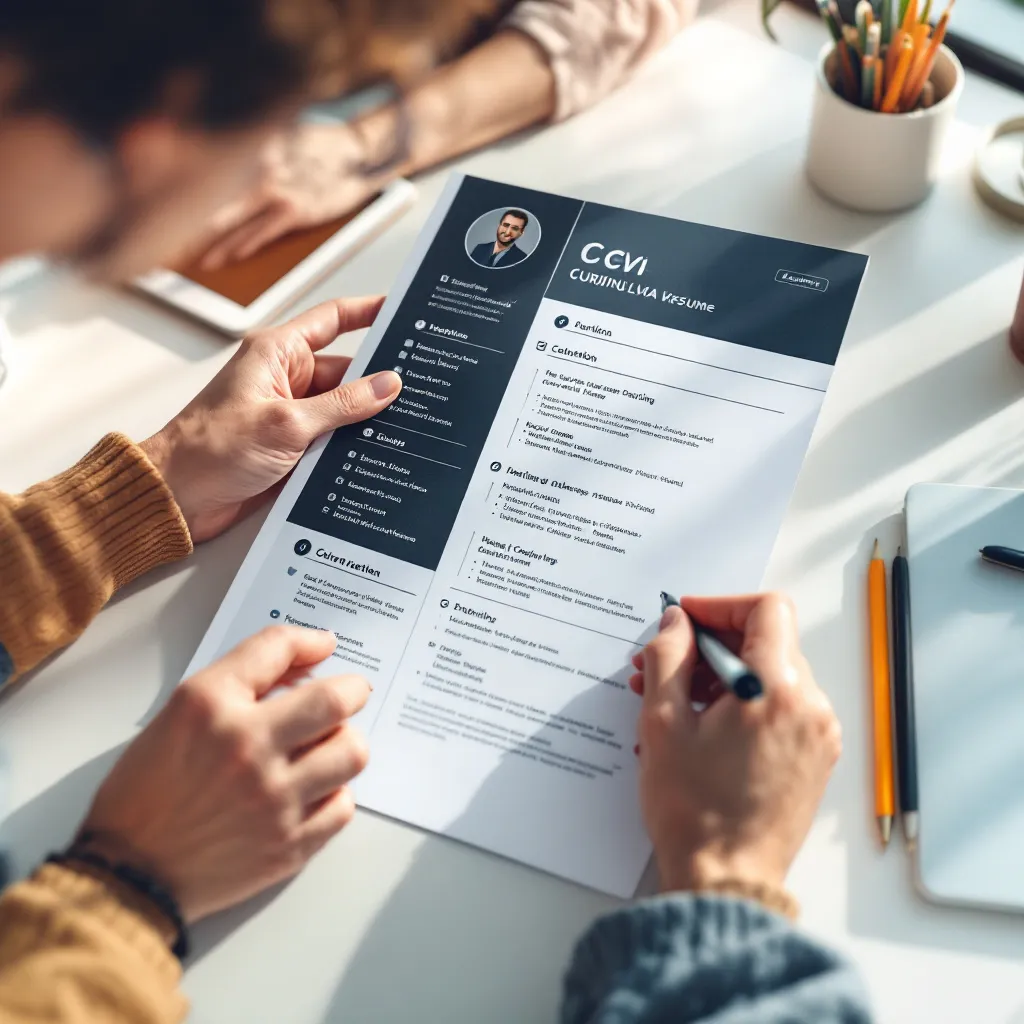As a designer, your resume serves a dual purpose: showcasing your professional qualifications while demonstrating your design sensibilities. In today’s competitive job market, striking the perfect balance between creative expression and functional requirements is essential for landing those coveted design roles.
Balancing Creativity and Functionality in Designer Resumes
Designers face a unique challenge when crafting resumes. While most professionals focus solely on content, designers must consider how their resume’s visual presentation reflects their skills. However, with 92% of recruiters using Applicant Tracking Systems (ATS) like Greenhouse or Lever, even the most creative resume examples must maintain functionality.
The key lies in strategic minimalism—using clean layouts with intentional whitespace and restrained color palettes. Fonts like Arial or Calibri remain ATS-friendly while still allowing for typographic hierarchy. Rather than embedding graphics that confuse ATS parsers, consider linking to your Behance or Dribbble profiles in your header.
When describing your experience, replace generic responsibilities with achievement-focused content featuring metrics. For example: “Boosted client conversion by 40% through UX redesign (2023)” tells a compelling story while remaining scannable.
Essential Design Elements for Different Design Specializations
Your resume formatting should reflect your design specialty while maintaining readability. Let’s explore how different design disciplines can optimize their resumes:
Graphic Design Resume Specifics
Graphic designers should demonstrate typography mastery through careful font pairing and hierarchy. Consider including subtle notes about CMYK/RGB color choices in your resume footer to showcase technical knowledge. Your personal branding elements should create a cohesive visual identity without overwhelming the content.
When seeking inspiration, look beyond generic graphic design resume templates to create something that uniquely represents your aesthetic while maintaining clean, scannable layouts.
UX/UI Designer Resume Considerations
UX/UI designers should apply user-centered thinking to their resume organization. Consider how recruiters will scan your document and structure information accordingly. Include concise case study snippets with user testing statistics that demonstrate your impact.
Information architecture principles should guide your content hierarchy, making it easy for hiring managers to find what they need. Balance your portfolio links with resume content by including QR codes or shortened URLs to specific projects that showcase your process.
Technical Specifications for Print and Digital Resume Formats
Understanding the technical requirements for different submission methods ensures your design translates properly across contexts:
Print Considerations:
- Use 300 DPI resolution for crisp output
- Choose PDF/X-1a as your safest file format
- Test print in black and white to ensure readability
Digital Specifications:
- Ensure hyperlinks are active and tested
- Keep file size under 5MB for email attachments
- Consider creating an HTML version for online applications
While exploring cool looking resumes, remember that technical execution matters as much as creative concept. The most impressive designs fail if they don’t function properly across different platforms.
Creating an ATS-Friendly Designer Resume Without Sacrificing Creativity
ATS systems scan resumes for keywords and structure before human eyes ever see them. To create designer resume format that passes these systems:
- Optimize keywords by mirroring exact phrases like “Design Thinking” or “Agile UX” from job postings
- Use hybrid formatting with a chronological work history complemented by a skills matrix styled as minimalist infographics
- Apply color accents sparingly in headings – colors like Pantone 15-0343 (energetic yellow) are safe for most ATS systems
ResuFit offers specialized tools for designers to create ATS-optimized resumes that maintain visual impact. Their AI-powered analysis helps identify missing keywords and suggests improvements while preserving your creative vision.
Regional Design Preferences and Adaptation Strategies
Design preferences vary significantly across English-speaking markets:
US Market:
- Bold self-promotion is accepted and often expected
- QR codes to portfolios are gaining traction
- One-page resumes are standard for most positions
UK Market:
- More conservative layouts are typically preferred
- Include National Insurance number in footers
- Two-page resumes are more commonly accepted
When adapting your resume for different regions, research each market’s American resume format sample expectations and adjust accordingly. What works brilliantly in one market might hinder your application in another.
Practical Implementation: From Concept to Finished Resume
Follow this step-by-step process to create a resume that balances creativity with functionality:
- Content audit: Use tools like ResuFit‘s ATS Checker to identify missing keywords and optimize content
- Visual prototyping: Build your design in Figma or InDesign, then simplify for ATS compatibility
- Cross-testing: Print a black and white version to check contrast; run through ATS simulators to verify readability
- Feedback collection: Get input from both designers and non-designers to ensure your resume communicates effectively
- Iteration: Refine based on feedback, continuously improving both visual impact and functionality
Consider working with affordable resume writing services that specialize in creative fields if you’re struggling to balance these elements effectively.
Conclusion
Your resume is often your first design project in the eyes of potential employers. By thoughtfully balancing creativity with functionality, you demonstrate not just your design skills but your problem-solving abilities and professional awareness.
Remember that the most effective design resume examples showcase both aesthetic sensibility and practical understanding of job search requirements. In a field where form and function are equally important, your resume should embody this fundamental design principle.
With ResuFit‘s AI-powered resume optimization tools, designers can create documents that showcase their creativity while ensuring they make it through ATS systems to land on recruiters’ desks. Take advantage of their specialized features to craft a resume that truly represents your design capabilities while meeting all technical requirements for successful job applications.




















